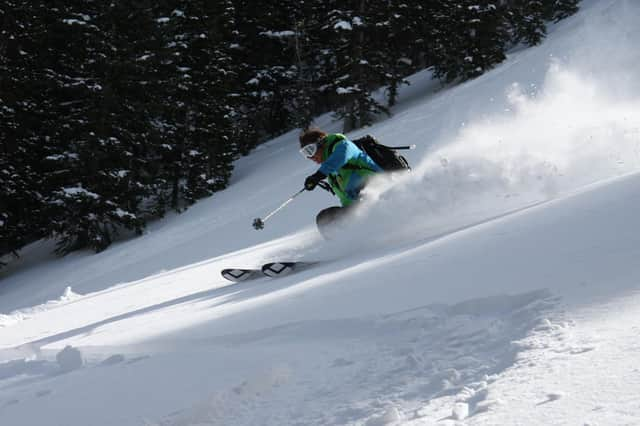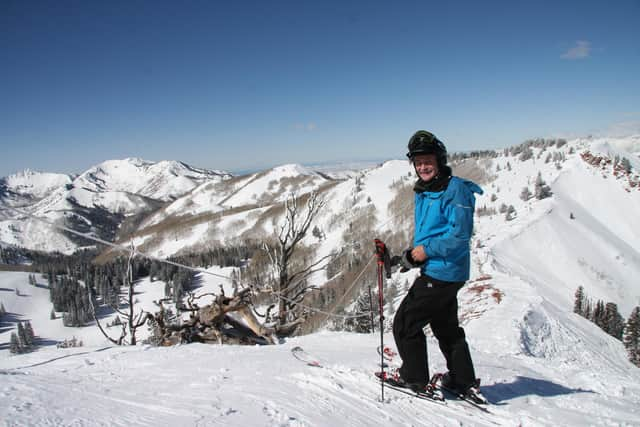Ski lifts as an election-deciding issue? Only in America


Back then, the cableway of contention was called SkiLink, and its backers wanted it to run between the neighbouring ski resorts of Canyons and Solitude, passing through an area of government-owned wild land along the way. One of the supporters of the scheme I interviewed was Ted Wilson – a progressive Democrat mayor of Salt Lake City from 1976 to 1985 with a strong track record of campaigning on environmental issues. In his view, while the scheme would undoubtedly have altered the character of the high-altitude wilderness between the two resorts, that change would have been justified by a projected reduction in the number of skier car journeys, as more people used the SkiLink to get from Park City to Solitude, rather than driving there via the often-congested Big Cottonwood Canyon. As he put it: “Cableways do have a visual impact, but to me it’s a small trade-off for getting people out of their automobiles.” (Ted, it should be noted, was in his mid-70s when I met him and still ripping steep double-black-diamond runs with some style.)
On the other side of the great SkiLink debate, meanwhile, I had dinner with Rick Steiner, a lovely, softly-spoken man and a supporter of the Save Our Canyons conservation group. Like Wilson, Steiner was a passionate backcountry skier with decades of experience in the Wasatch, but unlike Wilson he was firmly opposed to SkiLink. He described the argument that the gondola would reduce carbon emissions as “a bunch of smoke” pointing out that, because a skier based at Canyons would need to take several lifts just to get to the base of the new link, they would probably be quicker to travel to Solitude by car.
Advertisement
Hide AdAdvertisement
Hide AdIn the end, Save Our Canyons won the argument, and in 2014 they declared on their Facebook page “SkiLink is dead”. However, in a prophetic moment they also posted: “Unfortunately, the battle to preserve what we love of the Central Wasatch isn’t over. Please join our good friends at Wasatch Backcountry Alliance and support their worthy efforts.”
That takes us neatly into Utah’s current gondola debate, because the Wasatch Backcountry Alliance are now spearheading a campaign to prevent another gondola from being built, this one in Little Cottonwood Canyon, where a narrow, frequently snow-bound road is the only direct link between the metropolis of Salt Lake City and the legendary ski resorts of Alta and Snowbird.
Like Big Cottonwood, which runs parallel a few kilometres to the north, Little Cottonwood is frequently gridlocked when snow conditions are good, forcing the Utah Department of Transport (UDOT) to leave no stone unturned in their search for a solution – and the solution everyone's talking about right now is the proposed eight-mile long tri-cable system, estimated to cost $550 million, which, if built, would be the longest aerial ropeway anywhere in the world. Rather than driving all the way up the canyon to the two resorts, skiers would simply drive to a large “parking structure” near the mouth of the canyon, hop on the gondola and ride to either Alta or Snowbird, with cabins carrying up to 35 skiers departing at two minute intervals.
The Wasatch Backcountry Alliance argue that the scheme will “ruin one of the most beautiful canyons in Utah” and suggest that the proposed car park at the base of the canyon will simply create new areas of congestion. They are campaigning instead for an improvement to the existing bus services, which have recently been hit by driver shortages.
Supporters of the scheme, meanwhile, who include the Alta and Snowbird resorts plus assorted property developers, argue that the gondola is, as Utah’s Republican Lieutenant Governor Deidre Henderson put it, “the most cost-effective with the longest life cycle of any of the proposed alternatives.”


In October last year, UDOT picked the gondola as its recommended solution to the congestion problems in Little Cottonwood, subject to a period of public consultation, and its final recommendation is expected imminently. Funding is still to be secured, however, and there’s no shortage of political opposition to the scheme. Salt Lake County’s Democrat Mayor Jenny Wilson has expressed her disapproval, while Monica Zoltanski, new mayor of the nearby city of Sandy (population 87,000), has said part of the reason she was elected in November was because she came out against the gondola. Ski lifts as an election-deciding issue? Only in America.
